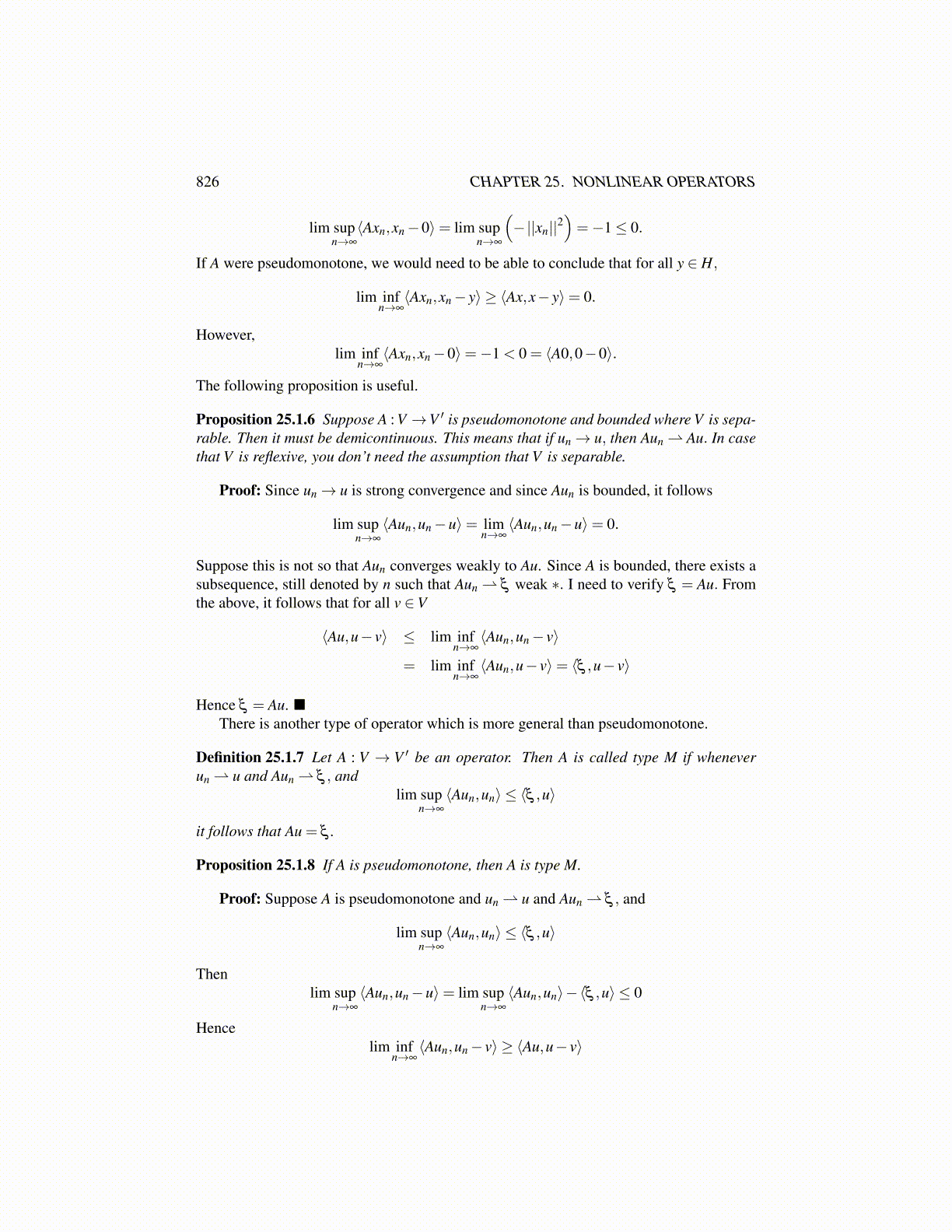
826 CHAPTER 25. NONLINEAR OPERATORS
lim supn→∞
⟨Axn,xn−0⟩= lim supn→∞
(−||xn||2
)=−1≤ 0.
If A were pseudomonotone, we would need to be able to conclude that for all y ∈ H,
lim infn→∞⟨Axn,xn− y⟩ ≥ ⟨Ax,x− y⟩= 0.
However,lim inf
n→∞⟨Axn,xn−0⟩=−1 < 0 = ⟨A0,0−0⟩.
The following proposition is useful.
Proposition 25.1.6 Suppose A : V →V ′ is pseudomonotone and bounded where V is sepa-rable. Then it must be demicontinuous. This means that if un→ u, then Aun ⇀ Au. In casethat V is reflexive, you don’t need the assumption that V is separable.
Proof: Since un→ u is strong convergence and since Aun is bounded, it follows
lim supn→∞
⟨Aun,un−u⟩= limn→∞⟨Aun,un−u⟩= 0.
Suppose this is not so that Aun converges weakly to Au. Since A is bounded, there exists asubsequence, still denoted by n such that Aun ⇀ ξ weak ∗. I need to verify ξ = Au. Fromthe above, it follows that for all v ∈V
⟨Au,u− v⟩ ≤ lim infn→∞⟨Aun,un− v⟩
= lim infn→∞⟨Aun,u− v⟩= ⟨ξ ,u− v⟩
Hence ξ = Au.There is another type of operator which is more general than pseudomonotone.
Definition 25.1.7 Let A : V → V ′ be an operator. Then A is called type M if wheneverun ⇀ u and Aun ⇀ ξ , and
lim supn→∞
⟨Aun,un⟩ ≤ ⟨ξ ,u⟩
it follows that Au = ξ .
Proposition 25.1.8 If A is pseudomonotone, then A is type M.
Proof: Suppose A is pseudomonotone and un ⇀ u and Aun ⇀ ξ , and
lim supn→∞
⟨Aun,un⟩ ≤ ⟨ξ ,u⟩
Thenlim sup
n→∞
⟨Aun,un−u⟩= lim supn→∞
⟨Aun,un⟩−⟨ξ ,u⟩ ≤ 0
Hencelim inf
n→∞⟨Aun,un− v⟩ ≥ ⟨Au,u− v⟩